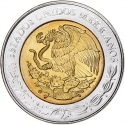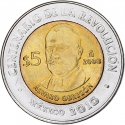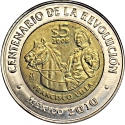You are about to finish your registration. Please check your mailbox (including spam folder). There should be a letter with a confirmation link. Check setting to make sure that your e-mail address is correct.
Send letter againDescription
The Mexican Revolution was a major armed struggle c. 1910–1920 that radically transformed Mexican culture and government. Its outbreak in 1910 resulted from the failure of the 35-year long regime of Porfirio Díaz to find a managed solution to the presidential succession. Wealthy landowner Francisco I. Madero challenged Díaz in 1910 presidential election, and following the rigged results, revolted under the Plan of San Luis Potosí. Armed conflict ousted Díaz from power and a new election was held in 1911, bringing Madero to the presidency.
In February 1913 Madero and his vice president Pino Suárez were forced to resign, were assassinated, and the counter-revolutionary regime of General Victoriano Huerta came to power, backed by the U.S., business interests, and other supporters of the old order. Huerta remained in power from February 1913 until July 1914, when he was forced out by a coalition of different regional revolutionary forces. Then the revolutionaries' attempt to come to a political agreement following Huerta's ouster failed, and Mexico was plunged into a civil war (1914–1915). The armed conflict lasted for the better part of a decade, until around 1920. Over time the Revolution changed from a revolt against the established order under Díaz to a multi-sided civil war in particular regions with frequently shifting power struggles among factions in the Mexican Revolution.
Obverse

|
Depicts the seal of the United Mexican States. ESTADOS UNIDOS MEXICANOS |
|---|---|
Reverse

|
Carmen Serdán (1875-1948) worked enthusiastically alongside her brothers Aquiles and Máximo in the anti-reelection movement and on Madero's campaigns. Her intense work in the anti-reelection campaign gives her an important place in the history of the Mexican Revolution. CENTENARIO DE LA REVOLUCIÓN |
| Edge |
5 Pesos
100th Anniversary of the Mexican Revolution
Carmen Serdán
Subscribe series
KM# 909
100th Anniversary of the Mexican Revolution
Carmen Serdán
Characteristics
| Type | Commemorative Issue (Circulating) |
| Material | Bi-Metallic |
| Ring | Stainless Steel |
| Center | Aluminium Bronze |
| Weight | 7.07 g |
| Diameter | 25.5 mm |
| Thickness | - |
| Shape |
|
| Alignment | Coin |
| Mint |
Mexican Mint (Mo)
|







